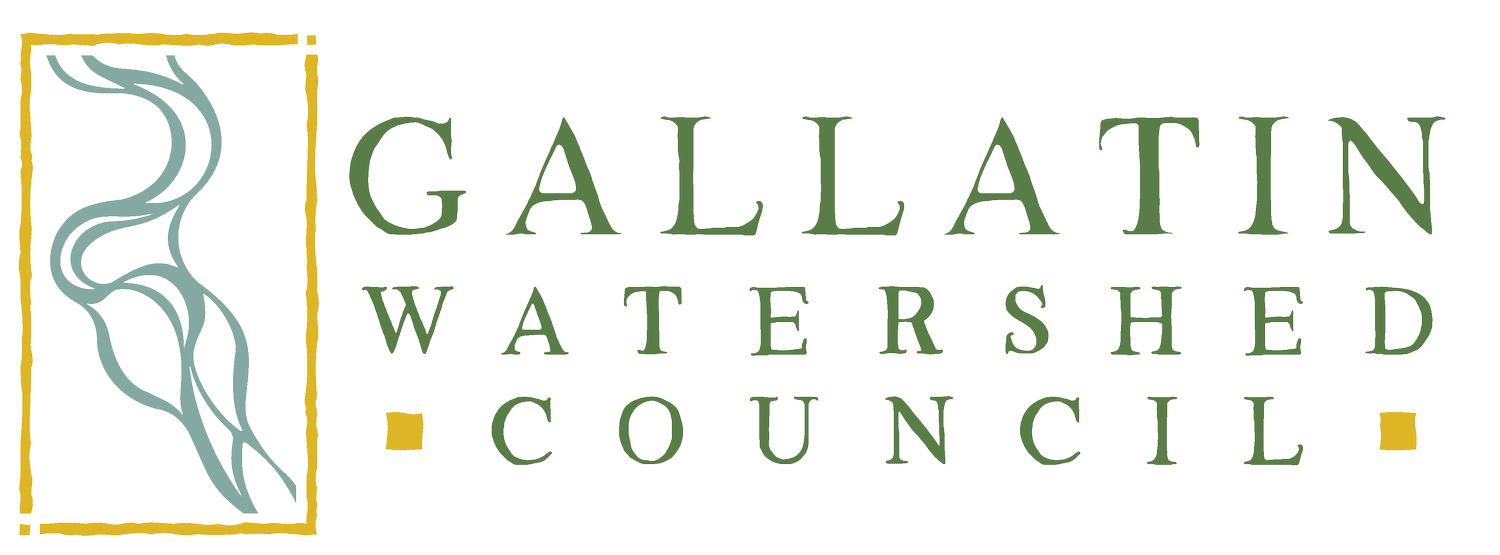Watershed Wednesday: Gallatin Stream Teams
Happy #WatershedWednesday! This week’s focus is on our local water monitoring program, the Gallatin Stream Teams. Volunteers spend their time in the field doing hands-on sampling in creeks and streams to collect data. Participating in Stream Teams is a great way to learn about water quality data, to get involved in your home watershed, gain technical skills, and to get outside! No prior experience is needed, and 2022 volunteer sign-ups have opened for this fun summer season.
For the past 15 years (wow!), citizen scientists have been testing water quality and documenting metrics as volunteers. The ongoing monitoring program is operated in partnership between the Gallatin Local Water Quality District (GLWQD) and GWC. Since 2018, the Stream Team focus has been on collecting surface water monitoring data for water quality and quantity.
The Surface Water Monitoring Network covers 16 sites on 12 streams throughout the Lower Gallatin Watershed (LGW). Data is being collected to observe long-term trends, and previous data has been used by GLWQD, GWC, Montana DEQ (MTDEQ), the City of Bozeman, and others to assess the health of the watershed. The work volunteers do is important!
Recently, the LGW has been selected as MTDEQ’s next priority basin. This means that beginning in 2023, MTDEQ will commit several hundred of thousands of dollars for projects addressing pollution in LGW streams and rivers. In this watershed, 15 out of 23 major streams and rivers are classified as impaired by the DEQ. By definition, “impaired” means the stream or river does not fully support one or more “beneficial uses” defined by state water quality statutes such as agricultural, industrial, aquatic life support, cold water fishery, recreational contact, and drinking water.
Total Maximum Daily Loads (TMDLs) are the maximum amount of a pollutant a waterbody can receive and still meet water quality standards. If the pollutant amount is over the TMDL, the river or stream would be designated as impaired.
In 2020, GLWQD published a “Surface Water Monitoring Network Watershed Health Summary (p. 6)” that reports a variety of parameters measured at different streams and rivers in the LGW. Nutrients, such as nitrogen and phosphorus, pathogens, like E. coli, and sediment are commonly measured. There is a “report card” that uses green, yellow and red to portray of how healthy each stream or river is on different measurements.
So, what can happen when TMDLs are exceeded? Having too much sediment in a stream can alter aquatic insect communities, reduce fish spawning success, and increase turbidity. Excess nutrients affect macroinvertebrate populations and impact habitat, impairing the beneficial uses of aquatic life, primary contact recreation like swimming and agricultural uses. Pathogens like E. Coli harm aquatic life and fisheries and have negative impacts on primary contact recreation.
With all of the data collected, it makes it easier to determine where projects to improve river or stream health can take place! Data can also provide insight on how new population growth in the valley affects local waterbodies.
Follow along with previous Gallatin Stream Team volunteers with the story map. If you’re interested in monitoring this season and hanging out in rivers and streams, fill out the volunteer application here! If you were a past volunteer, MSU Extension has published some previous data collected on their Data Viewer. Select:
“Gallatin Watershed”
“Entire Range”
Then choose different options, such as dissolved oxygen, to see the numbers!
See you out in the field soon!


